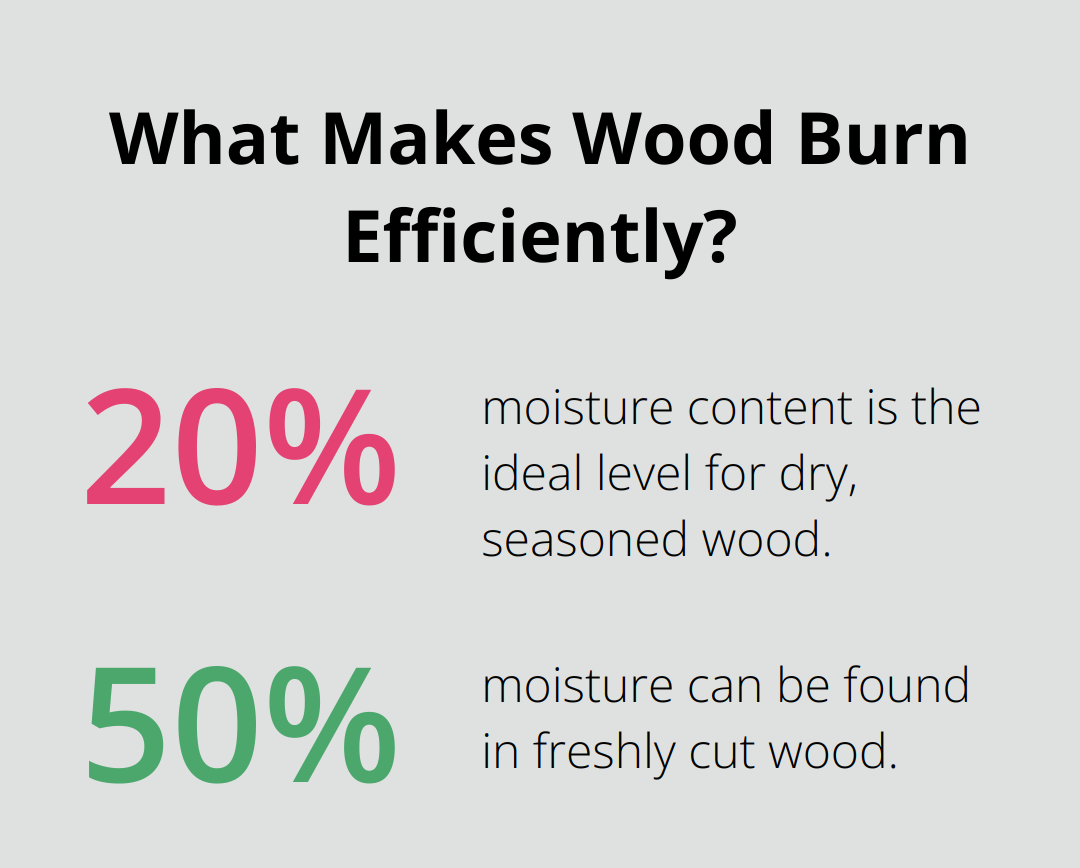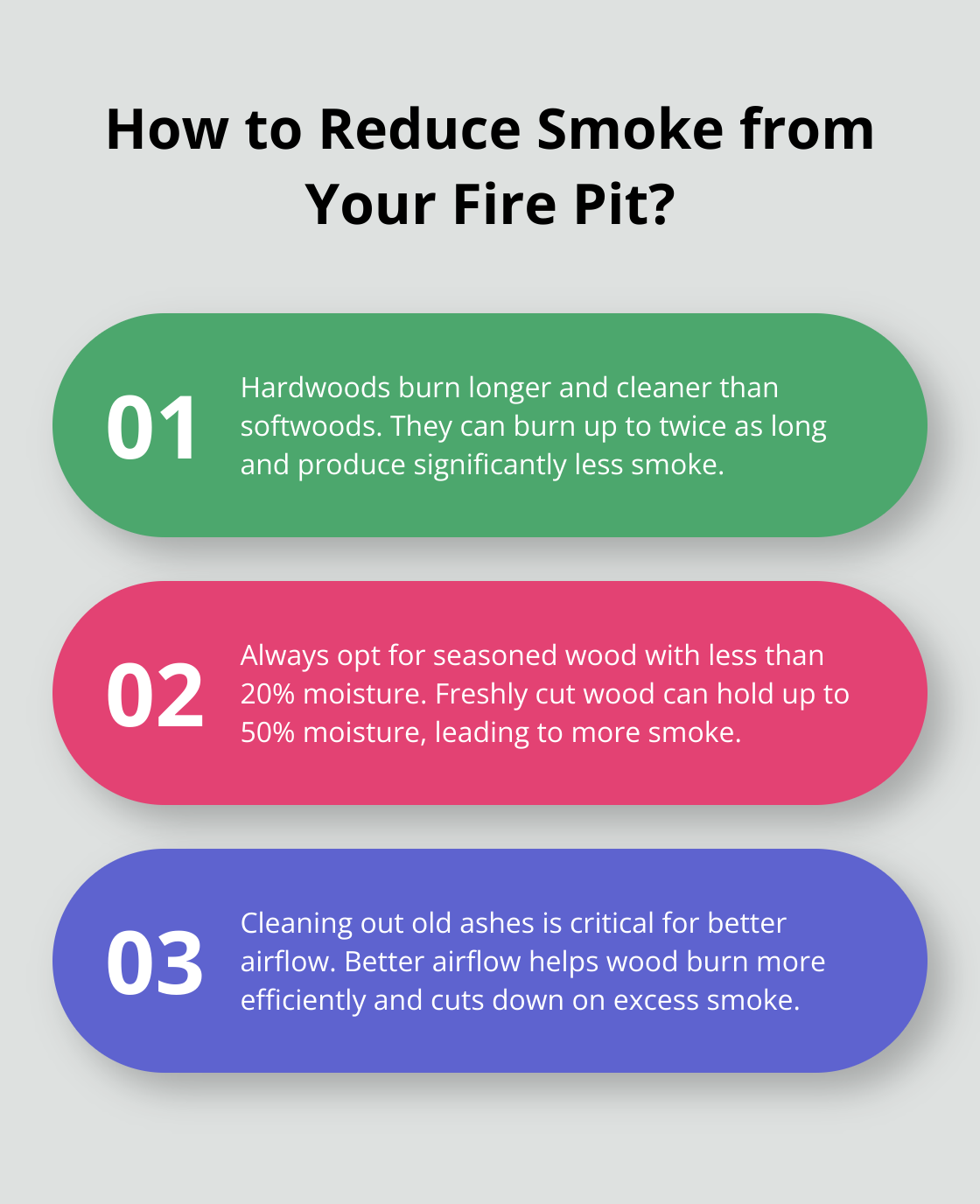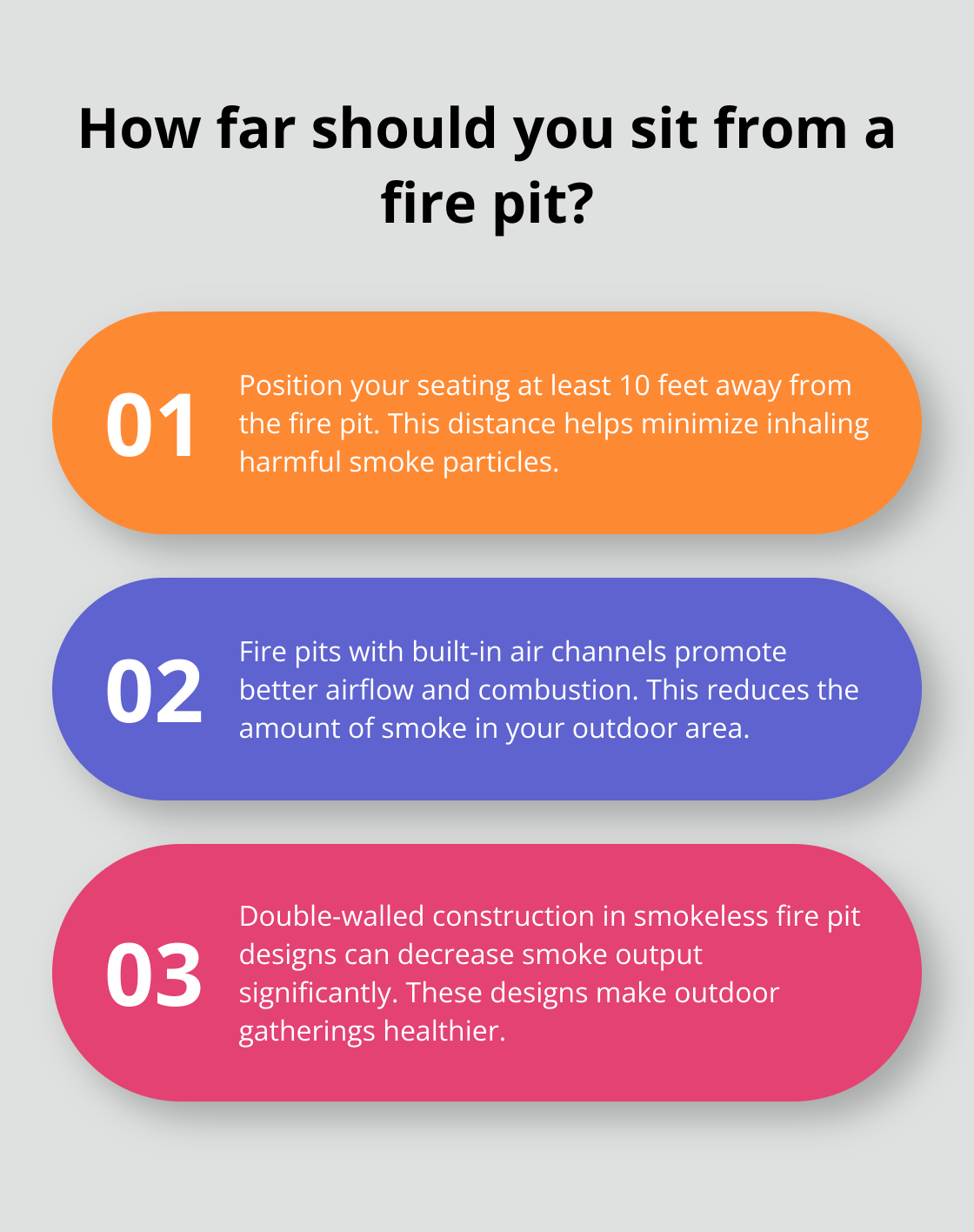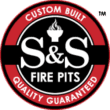
Controlling smoke from fire pits can enhance your outdoor experience and improve safety.
At S&S Fire Pits, we know the importance of a clear, enjoyable gathering space. In this guide, we’ll explore causes of smoke and share practical tips to reduce it.
Let’s dive into the essentials of smoke control.
What Causes Smoke in Fire Pits?
Understanding smoke production in fire pits can help you minimize it and enjoy cleaner air during your gatherings. Let’s look at the main factors influencing smoke levels.
Types of Wood Matter
The type of wood you use significantly affects how much smoke your fire pit produces. Hardwoods like oak, hickory, and maple burn longer and produce less smoke compared to softwoods like pine or spruce. Softwoods have higher resin content, leading to more smoke and soot. Research from the Forestry Commission shows hardwoods can burn about twice as long as softwoods and produce less smoke, making them a better choice for your fire pit.
Environmental Factors
Environmental conditions also play a crucial role. Wind direction and speed can influence how smoke disperses. If the wind is blowing towards your seating area, you’ll end up surrounded by smoke. It’s best to place your fire pit in an area where wind patterns can be considered, or adjust seating based on current wind conditions. According to the National Weather Service, understanding local wind patterns can help reduce smoke exposure during outdoor fires.
Moisture’s Role
Moisture in wood is another critical factor. Wet or green wood doesn’t burn efficiently, leading to excessive smoke. Always use dry, seasoned wood, which has a moisture content of less than 20%. This wood ignites more easily and produces less smoke. According to the U.S. Environmental Protection Agency, freshly cut wood can contain up to 50% moisture, whereas seasoned wood typically contains 20-25%.

Regularly store your firewood in a covered area to keep it dry. A simple moisture meter can help you determine if your wood is adequately seasoned. For additional tips on firewood storage, check out our firewood storage guide.
In the next chapter, we’ll explore practical tips to make your fire pit experience as smoke-free as possible.
How to Reduce Smoke
Choosing the Right Wood
The wood you burn plays a vital role in smoke production. Hardwoods like oak, hickory, and maple are preferred choices because they burn longer and cleaner than softwoods. According to the Forestry Commission, these hardwoods can burn up to twice as long and produce significantly less smoke. Always opt for seasoned wood with a moisture content of less than 20%. Freshly cut wood can hold up to 50% moisture, which leads to inefficient burning and more smoke. You can use a moisture meter to ensure your wood is properly seasoned, making your fires more enjoyable and less smoky.
Proper Fire Pit Maintenance
Regular maintenance of your fire pit is essential for reducing smoke. Cleaning out old ashes is critical as it promotes better airflow. This helps the wood burn more efficiently, cutting down on excess smoke. The design of your fire pit can also affect this. For instance, ensuring there are enough ventilation holes or slots can significantly improve airflow. A well-maintained fire pit not only functions better but also lasts longer, giving you more value for your investment.
Using Smoke-Reducing Accessories
Certain accessories can help minimize smoke output from your fire pit. For example, fire pit screens help control embers and improve air circulation. Some advanced fire pits come with built-in air channels designed to provide a more complete combustion cycle, reducing smoke. Consider using a smokeless fire pit design, which utilizes a double-wall structure to pull in more air and reburn smoke particles before they leave the fire pit. These designs have become increasingly popular and offer a practical solution for a smoke-free experience.

By implementing these techniques, you can significantly reduce the smoke from your fire pit and make your outdoor gatherings more enjoyable. For more details on fire pit designs and accessories, you can explore our fire pit accessories guide.
How to Enhance Health and Safety
Health Risks Associated with Smoke Exposure
Prolonged exposure to smoke from fire pits can have serious health consequences. Inhaling smoke particles can irritate your respiratory system and worsen conditions like asthma or bronchitis. A study by the American Lung Association highlights that even short-term exposure to wood smoke can reduce lung function.
Safe Distances for Seating Arrangements
Placing seating at a safe distance from the fire pit is crucial to minimize smoke exposure. Position your seating at least 10 feet away from the fire pit. This distance reduces the risk of inhaling harmful smoke particles and provides a safer environment for everyone. According to safety guidelines, maintaining this buffer zone is essential for both comfort and health.
Implementing Ventilation Solutions
Proper ventilation can significantly decrease the amount of smoke lingering in your outdoor area. Consider installing a fire pit with built-in air channels that provide better airflow. These designs encourage a more complete combustion, resulting in less smoke. You can also place a fan nearby to help direct smoke away from your seating area. Using smokeless fire pit designs that feature double-walled construction can be a game-changer in reducing smoke output.

Implement these safety measures to make your outdoor fire pit experiences healthier and more enjoyable for everyone.
Conclusion
Effectively controlling smoke from your fire pit can drastically enhance your outdoor gatherings. By choosing the right wood, maintaining your fire pit regularly, and utilizing smoke-reducing accessories, you can create a more enjoyable and cleaner outdoor experience. Hardwoods like oak and maple, along with proper fire pit design, play substantial roles in reducing smoke.

Health and safety should never be overlooked. Ensuring proper ventilation, maintaining safe distances for seating, and being aware of potential health risks associated with smoke exposure are crucial steps. Reducing smoke not only improves air quality but also protects the well-being of your guests.
Applying these best practices can make all the difference in your fire pit experience. For those looking to elevate their outdoor living space, we at S&S Fire Pits offer handmade, unique fire pits all built from solid USA steel. Each product is designed to last a lifetime S&S Fire Pits. By investing in high-quality, durable fire pits, you ensure continual enjoyment and fewer smoke-related issues.
Embrace these tips and enjoy smoke-free, health-conscious gatherings, creating lasting memories around your fire pit.


